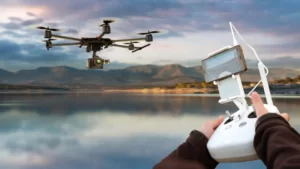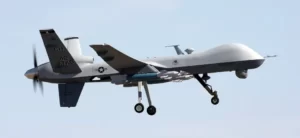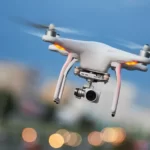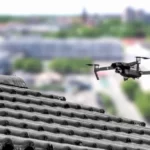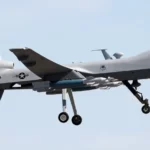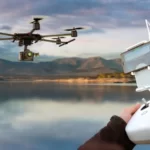There are thousands of aircraft in the sky every day. Have you ever wondered what are different types of airspace, or how pilots understand where they can and can’t fly? Read on!
The National Airspace System, which divides the atmosphere into three-dimensional compartments known as airspace classes, was created by the Federal Aviation Administration (FAA) to facilitate daily flight traffic.
Though it might seem a little overwhelming at first, don’t worry! We’ll be looking at how the FAA categorizes airspace, using the ABCs!
Table of Contents
6 Types of Airspace
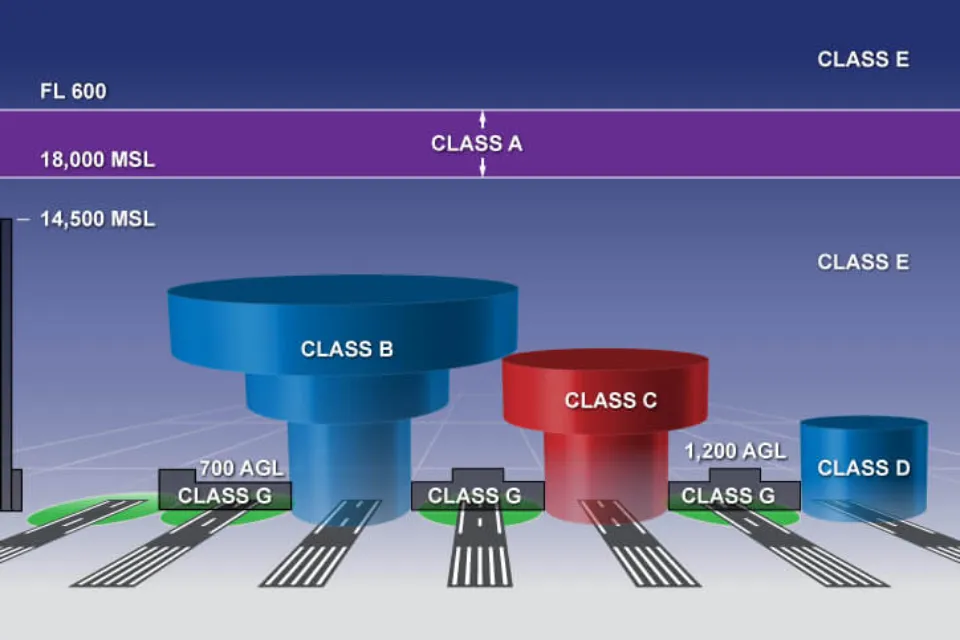
Class a Airspace
Class A airspace generally begins from 18,000 feet mean sea level up to and including 60,000 feet. Higher performance aircraft, airline and cargo operators, etc., generally operate in Class A under Instrument Flight Rules.
Class B Airspace
Class B airspace utilizes the space surrounding the nation’s busiest airports and begins from the surface to 10,000 feet MSL.
Class B resembles an upside-down wedding cake because it is composed of multiple layers of various sizes and shapes that are individually tailored for the needs of the airspace and get wider as altitude rises.
Any aircraft wishing to operate in or through Class B airspace must first obtain authorization from Air Traffic Control (ATC) and adhere to their instructions.
Class C Airspace
Class C surrounds busy airports that are not quite as busy as Although less complex than Class B airports, it also consists of layers that are tailored to the requirements of the airspace.
In Class C, there is typically a 10 nautical mile outer ring from 1,200 to 4,000 feet above the airport elevation and a 5 nautical mile inner ring from the surface to 4,000 feet.
Although there is no specific clearance required for entry into the Charlie airspace, two-way radio communication with the ATC facility is required in order to receive and maintain air traffic services while in the airspace.
Class D Airspace
Moving on to lesser and lesser restricted airspace, the Class D airspace exists around airports that still have an operating control tower but are not as busy as the Class C airports.
Generally beginning from the surface to 2,500 feet above airport elevation, the shape of Class D airspace is individually tailored but exists as just one layer, rather than having varying shapes stacked on top of each other.
Before entering Class D airspace and while using it, two-way communication must be established and kept up.
Class E Airspace
Class E airspace is any controlled airspace not classified as the aforementioned airspaces surrounding airports. Most of the airspace in the United States is designated Class E airspace.
Aircraft flying under Visual Flight Rules typically have the freedom to move about the airspace as they please, whereas Class E airspace is intended for air traffic using Instrument Flight Rules. It can be difficult to determine where Class E airspace begins and ends. In most places, Class E airspace starts at 1,200 feet (AGL), but in some places it may start at the ground or at 700 AGL.
The airspace encompasses all airspace above 18,000 feet MSL, but not higher than that. Over 60,000 feet, Class E starts up again.
On the sectional, there are some locations where the base of Class E is shown to start at a different elevation than usual, such as offshore areas surrounding the contiguous United States.
Class G Airspace
Uncontrolled airspace is known as Class Golf (G), and is the portion of airspace not designated as any of the previous airspaces. From the ground up to the base of the Class E airspace above, there is Class G.
Pilots are free to maneuver as they please, with the exception of any regulations that limit their ability to do things like low-altitude aerobatics or engage in activities that could endanger people or property on the ground.
The majority of airports in the US lack a control tower and are therefore uncontrolled, requiring pilots to plan their own airport operations using an onboard radio if one is available.
Other Airspace Classes Worth Mentioning
There are additional types of airspace in addition to the previously mentioned six classes. The term “special use airspace” describes them.
The term “special use airspace” refers to zones where specific activities that must remain within those boundaries are taking place, where other aircraft are subject to restrictions that are not related to those activities, or where both. Special use airspace areas are depicted on aeronautical charts, except for controlled firing areas.
There are prohibited areas and restricted areas for regulated special use airspace. Military operating areas, warning areas, alert areas, and controlled firing areas make up non-regulatory special use airspace.
Prohibited Areas
There are places where flying is prohibited for safety or to safeguard the general welfare of the country.
It begins at the surface and extends up to a specified altitude, and is depicted on sectional charts with a blue hashed shape with the letter “P” and a series of numbers, to serve as the identifier of that area.
Restricted Areas
Aerial gunnery, guided missile firing, and other dangerous activities that endanger non-participating aircraft are found in restricted areas.
When it is active, aircraft must have authorization before flying within the zone. It begins at the surface and extends up to a specified altitude, and is depicted on sectional charts with a blue hashed shape with the letter “R” and a series of numbers, to serve as the identifier of that area.
Warning Areas
Non-participating pilots are alerted to potential danger in warning areas, which also contain hazardous activities to non-participating aircraft. However, they are not forbidden from flying in those areas.
Over three nautical miles from the coast, there are both domestic and international waters. It begins at the surface and extends up to a specified altitude, and is depicted on sectional charts with a blue hashed shape with the letter “W” and a series of numbers, to serve as the identifier of that area.
Military Operation Areas (MOAs)
Military operating areas, or MOAs, are where military operations take place and where some military training is conducted away from IFR traffic. Whether or not the area is in use, VFR traffic may still pass through it; however, it should take extra care.
MOAs start at a designated altitude and extend up to, but not including FL180 and are depicted on sectional charts using magenta hashed lines and are given names such as “Rainier MOA”, “Chinook MOA”.
Alert Areas
Pilots can learn about high traffic areas in alert areas by looking for signs of unusual aerial activity or pilot training.
In these regions, transitory aircraft should exercise extra caution. Alert areas on a sectional chart are depicted with magenta hashed lines, with the letter “A,” and a series of numbers that serve as the identifier.
Controlled Firing Areas
Controlled firing areas, or CFAs, allow such activity to take place in a confined area to not create a hazard to aircraft.
Activities are immediately stopped when it appears that a non-participating aircraft is heading toward the area, unlike other hazardous activities that cordon off specific airspaces. CFAs aren’t charted since they do not require pilots to alter their course.
Temporary Flight Restriction (TFR)
Temporary flight restrictions are short-term blocks of airspace used to temporarily prevent or limit nonparticipating aircraft from entering that area.
They are typically employed for the launch of spacecraft, the suppression of forest fires, the suppression of natural disasters, sporting events, or the protection of well-known public figures.
Other Airspace
Other auxiliary airspaces include airport advisory areas, air defense identification zones, military training routes, VFR flyways, VFR corridors, VFR transition routes, terminal radar service areas, national security areas, and finally, U.S. Wildlife refuges, parks, and forest service areas.
Final Words on Types of Airspace
Now you should know different types of airspace.
Every time you board a plane, you are encircled by airspace. To operate safely and legally, it’s critical to comprehend the guidelines and requirements.
Also Read: Different Types of Drones

